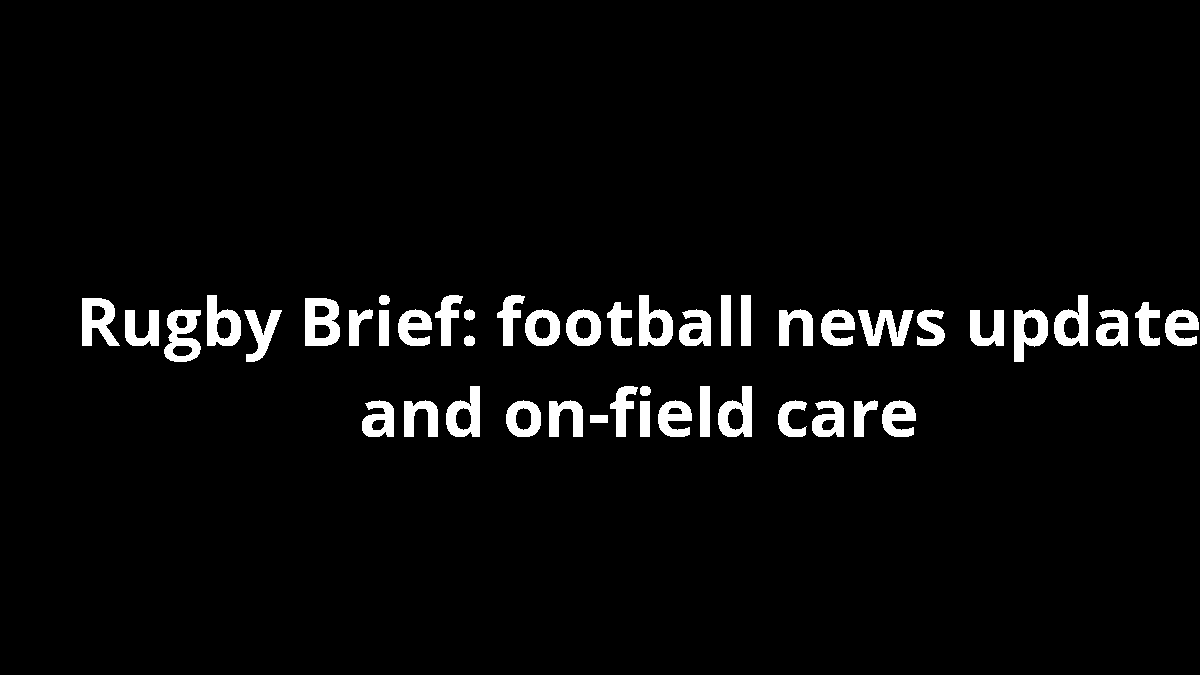Football News Brief: Content Mismatch
Today’s rugby-focused football news update aims to bridge two codes by examining injury prevention and medical readiness on the field. The football news update lens helps fans see how squads manage risk, prepare bodies, and maintain performance. The football news update approach also highlights how teams implement rapid on-field responses and data-driven rehab. The football news update frame, while rooted in rugby, borrows from clinical sports science to support safer play. Across the sport, coaches, medical teams, and welfare officers are aligning training loads with match schedules, screening for signs of concussion, and refining return-to-play protocols. This cross-pertilization matters because injuries shape lineups, tempo, and the fairness of competition. For readers seeking practical takeaways, the rugby side of the story focuses on prevention first, clear medical readiness, and timely decision-making on match days.
Concussion protocols in training and match play
Concussion protocols begin in training rooms and on the field. Baseline tests and sideline assessments guide decisions. Timely pauses prevent escalation and protect players’ long-term health. World Rugby and partners publish clear steps that clubs adapt to their schedule. See more on World Rugby and keep up with updates at BBC Sport Rugby.
On-field medical readiness and rapid response
On-field medical readiness means a trained team is ready to act within seconds of injury. Teams run drills that mirror match chaos, ensuring transfer plans, ED access, and transport are in place. Clear communication between coaches, medics, and sidelines limits harm and speeds proper care. This approach aligns with the broader rugby safety framework and supports spectator trust. For deeper context, see the ongoing coverage at BBC Sport Rugby and the governing body’s medical guidelines at World Rugby.
Request: Football or Rugby Injury Analysis
Rugby injury analytics must be understood in a sport that blends high contact with swift substitutions. Yet the goal is shared: protect players while preserving the integrity of competition. Time-loss injuries, training load, and match exposure feed a data-driven approach to prevention and rehab. For Rugby News readers, translating football-style analytics into rugby practice helps clubs tailor conditioning, concussion monitoring, and return-to-play timelines. In short, smart analysis drives safer play across both codes, but rugby-specific factors—tackle height, ruck dynamics, and high-velocity collisions—require tailored interpretation and reporting. See how analysts frame these themes in BBC Sport Rugby and stay informed via World Rugby.
Return-to-play criteria and timelines
Return-to-play decisions hinge on functional recovery, not just time since injury. Clinicians assess strength, balance, and sport-specific capacity. Rugby demands a staged progression from rest to resistance training, to controlled contact, then full practice. Guidelines from governing bodies emphasize objective clearance, with medical sign-off required before re-entry to competition. These criteria help minimize re-injury risk while supporting players’ careers. For the latest framework, consult World Rugby.
Injury risk data and prevention programs
Data-driven prevention programs focus on reducing head impacts, improving neck strength, and optimizing conditioning cycles. Clubs deploy wearable monitoring, video analysis, and standardized warmups to lower injury risk. By sharing best practices, teams raise the bar for player welfare. Coverage and insights from BBC Sport Rugby help broaden understanding of practical prevention strategies.
Next Step: Submit Rugby Article
Publishing a rugby-focused piece starts with a clear thesis, credible sources, and timely subject matter. The editorial path values medical oversight, ethical reporting, and practical implications for clubs and players. Our process aligns with safeguarding standards and aims to deliver actionable guidance to coaches, medics, and fans alike. In Rugby News, you’ll find a structured approach to presenting evidence, with accessible explanations. If you want this AIS study reworked for a sports medicine audience, we can recast it around athlete care and return-to-play implications, but that would require framing it as a sports medicine feature rather than a straight rugby report. See our guidelines and sample checks with reputable outlets such as BBC Sport Rugby and World Rugby.
Editorial process and medical review
Before submission, articles undergo editorial review and medical fact-checking to ensure accuracy. Writers provide clear sourcing, context, and a concise takeaway for practitioners. The review ensures language is accessible, with a focus on on-field relevance and player welfare. We emphasize transitions between data points, practical implications, and sport-specific detail, so readers gain usable insights. For reference, look at rugby coverage from World Rugby and BBC Sport Rugby.
Quality checks and sources
Quality checks include confirming match-day timelines, safety protocols, and rehab milestones. Respect for sources is essential; credible outlets with peer-reviewed or governing body material are preferred. When citing, we link directly to primary guidelines or reputable analyses, ensuring readers can verify information. For best-practice examples, consult BBC Sport Rugby and World Rugby.
Rugby Injury Readiness and Recovery Pathways
Recovery pathways in rugby have evolved beyond rest and ice. Modern teams follow staged rehab, functional testing, and clear criteria for return to play. We highlight the role of physiotherapists, strength and conditioning coaches, and medical oversight in reducing re-injury risk. Rehab roadmaps are often published internally by clubs to guide players and staff, promoting transparency while protecting privacy. The aim is a coordinated effort across clinical, coaching, and performance staff to restore players to peak form, with a focus on long-term health rather than short-term gains. Meanwhile, players benefit from open communication, realistic timelines, and supportive environments that foster confidence during rehabilitation.
As rugby progresses, the emphasis remains on safety, education, and evidence-based practice. Readers should expect ongoing in-depth reporting on injury prevention programs, medical readiness, and post-match recovery strategies. Our coverage connects on-field realities with science, offering a practical, player-centered view of how the sport protects its athletes while preserving the pace and passion that fans love.


